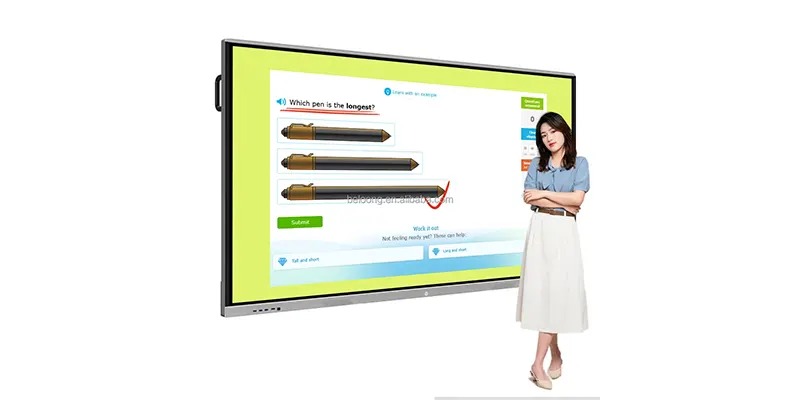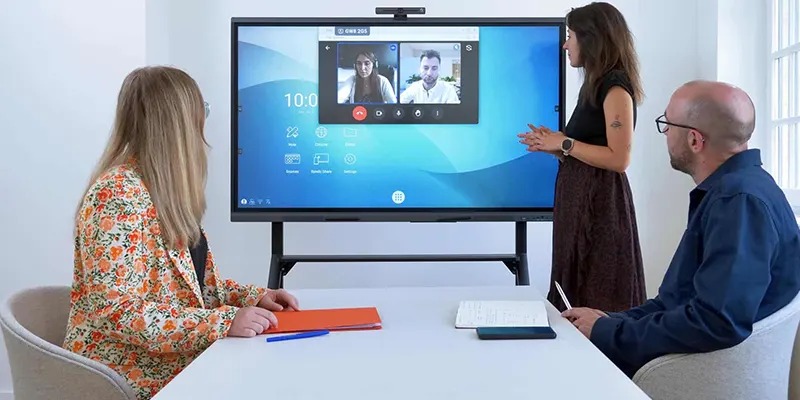How Do Interactive Touch Displays Work?

Interactive touch displays are everywhere—from smartphones and kiosks to massive wall-mounted panels in conference rooms. These screens have transformed how we communicate, learn, and access information. But what actually makes them work? At their core, interactive displays translate physical gestures into digital responses. When you tap, swipe, or pinch, the screen detects your movement, processes it through built-in sensors, and instantly triggers a corresponding action. This seamless interaction makes devices feel more intuitive, allowing users to navigate content as naturally as they interact with real-world objects.
What Makes a Touch Display “Interactive”?
A touch display becomes “interactive” when it doesn’t just show content—it responds to the user’s actions in real time. Instead of relying on external tools like a mouse or keyboard, users can directly engage with the screen using their fingers or a stylus. The display senses touch points, interprets gestures, and instantly performs the intended command. Whether it’s dragging an image, zooming into a map, writing on a digital whiteboard, or navigating menus, the screen reacts immediately and intelligently. This direct, hands-on control is what creates a more natural and immersive experience, making the user feel as if they’re physically manipulating the digital world.
Why Touch Technology Became So Popular?
Touch technology exploded in popularity because it offers a faster, more intuitive way to interact with digital content. Instead of learning how to use buttons, cursors, or complex menus, people can simply tap or swipe—actions that feel natural and familiar. Touchscreens also make devices more compact by eliminating physical keyboards and reducing the need for extra hardware. As smartphones, tablets, and interactive displays became mainstream, users quickly embraced the convenience and simplicity of touch-based navigation. Businesses and educators also adopted the technology because it improves engagement, supports real-time collaboration, and enhances user experience across retail, classrooms, and workplaces. All these factors combined have made touch technology a standard in modern digital interaction.
The Core Technology Behind Touch Displays
1.Input Detection and Processing
Every touch display has a system that detects a point of contact. It senses touch, converts it into data, and sends commands to the software.
2.Touch Sensors and Signal Interpretation
Sensors track your finger or stylus. The controller interprets these signals to determine:
Where the touch happened
How many touch points are active
The type of gesture used
Where Interactive Touch Displays Are Used?


Interactive touch displays have become essential tools across many industries because they make communication, navigation, and collaboration easier. In education, they serve as digital whiteboards that help teachers present lessons more dynamically while encouraging student participation. In retail, touchscreens appear in self-checkout stations, product catalogs, and digital signage, allowing customers to browse, order, or get information effortlessly. Corporate environments rely on large interactive panels for presentations, brainstorming sessions, and real-time collaboration during meetings. Public spaces like airports, museums, hospitals, and shopping malls use touch-enabled kiosks for wayfinding, ticketing, and customer service, providing quick and intuitive access to information. From entertainment to transportation, interactive displays enhance convenience and improve user experience wherever instant, hands-on interaction is needed.
Components of an Interactive Touch Display
Display Panel (LED, LCD, OLED)
Touch Sensor Overlay
Controller Board
Software InterfaceAn interactive touch display is made up of several key components that work together to detect touch, process information, and present visual content. At the core is the display panel, typically LED, LCD, or OLED, which shows images, videos, and interactive elements. Over this panel lies the touch sensor overlay, the layer responsible for detecting finger or stylus inputs—whether through capacitive, infrared, or optical technology. Behind the scenes, a controller board interprets every touch signal, determines the exact coordinates of the interaction, and communicates this data to the system. Finally, the software interface ties everything together by translating touch inputs into actions, enabling users to navigate apps, write notes, zoom, scroll, and interact seamlessly. Each of these components plays a crucial role in creating a responsive, intuitive, and smooth touch experience.
Conclusion
Interactive touch displays work by converting physical touch into digital actions using sensors, controllers, and smart software. Whether resistive, capacitive, infrared, or optical, each technology plays a role in making touchscreens fast, accurate, and intuitive. As innovation continues, touch displays will become even more responsive, immersive, and intelligent.
FAQs
1. What is the most common type of touch technology?
Capacitive technology, especially PCAP, is the most common today.
2. Can touchscreens work with gloves?
Resistive and some IR or specially designed capacitive screens support gloves.
3. How do interactive displays detect multiple touches?
By using grids of sensors that can track several contact points simultaneously.
4. Are infrared touchscreens durable?
Yes, because there’s no physical layer to wear out.
5. Which touch display is best for large panels?
Infrared and optical technologies are ideal for large-format interactive displays.
